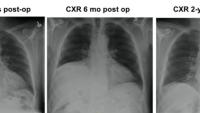Neuralgic Amyotrophy / Parsonage-Turner Syndrome
Neuralgic amyotrophy is an autoimmune disorder in which the body’s immune system produces antibodies that attack the peripheral nerves. Peripheral nerves are essential structures in the body that carry information from the brain and spinal cord to the muscles to initiate movements. They also carry sensory information from the extremities and other tissues to the spinal cord. The immune response can be triggered by stress of any kind, including viral illness, vaccination, injury, or surgery and patients of all ages can be affected.
Peripheral nerves that can be involved:
- Cranial nerves (“extended neuralgic amyotrophy”)
- Upper extremity nerves (specifically the diagnosis, Parsonage-Turner syndrome, named after British neurologists Maurice Parsonage and John Turner, who described the condition in The Lancet, 1948)
- lower extremity nerves (“idiopathic lumbosacral plexopathy”)
- In some cases, a single nerve is affected; in other cases, multiple nerves are involved
Symptoms include
- Severe neck, arm, and/or shoulder pain that usually resolves over days to weeks
- Followed by numbness and/or weakness in the arm (or other affected area).
- Some patients may not have pain but only experience weakness and/or numbness
Fortunately, many patients with neuralgic amyotrophy who develop neurological deficits recover completely over the course of several weeks. Other patients, depending on the extent of nerve involvement, require several months, or even 1-2 years, to recover.
Special considerations for Parsonage-Turner syndrome:
Parsonage-Turner can cause structural abnormalities in the affected peripheral nerves prohibiting patients to recover. The two most common structural nerve problems that prevent the nerve from spontaneously recovering include:
- Hourglass constrictions
- Nerve entrapments
Neuralgic Amyotrophy and Hourglass Constrictions
Some patients with neuralgic amyotrophy develop scarring along the affected nerves. When the scarring completely encircles the nerve, it can be acutely compressed at the site of the scar, causing a visible narrowing of the nerve, called an “hourglass constriction.” These constrictions can compress the nerve so severely at that location that the nerve cannot recover spontaneously. Sometimes multiple hourglass constrictions can occur together, called “beads-on-a-string”. Fortunately, hourglass constrictions usually can be treated surgically.
Assessing Surgical Candidacy
Patients with neuralgic amyotrophy who have persistent deficits after 6 weeks can undergo nerve imaging to assess whether hourglass constrictions are present. High-resolution nerve ultrasound and MR neurography are state-of-the-art diagnostic nerve imaging techniques that can reveal the presence of these hourglass constrictions. If a constriction is discovered along a nerve that is not recovering, surgical exploration of the nerve is indicated.

